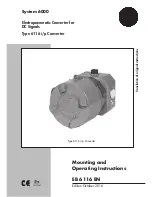
24
DS1113F1
CS4399
4.3 Class H Output
DSD_COPY_CHAN. Refer to
for control register details.
4.3 Class H Output
shows the Class H operation.
Figure 4-2. Class H Operation
The CS4399 outputs use Cirrus Logic two-mode Class H technology. This prevents unnecessarily wasting energy during
low power passages of program material or when the program material is played back at a low volume level.
The internal charge pump is the central component of the two-mode Class H technology implemented in the CS4399. The
charge pump receives its input voltage from the voltage present on the VCP or VP pin. From this input voltage, the charge
pump creates the differential rail voltages supplied to the output stages.The charge pump can supply two sets of
differential rail voltages: ±VCP and ±VP_LDO.
HV_EN setting, as shown in
, determines the VP_LDO voltage as shown in
. HV_EN = 1 setting is
required to support the 1.7-V full-scale voltage. In this setting, minimum VP is required to be higher than 3.3 V. When HV_
EN = 0, the max output voltage is 1.4-V RMS full-scale voltage. In this setting, minimum VP is required to be higher than
3 V.
Figure 4-3. Internal LDO Configuration
shows the nominal signal and volume level ranges when the output is set to the adapt modes explained in
. If the signal level is greater than the maximum value of this range, then clipping can occur.
Table 4-1. VP_LDO Voltage Per HV_EN Setting
HV_EN
VP_LDO Voltage
0
2.6 V
1
3.0 V
Table 4-2. Class H Supply Modes
Mode
Class H Supply Level
Signal
1
or Volume Level Range
2
,
3
,
1.In adapt-to-signal, the volume level ranges are approximations but are within –0.5 dB from the values shown.
0
±VP_LDO V, internally regulated from VP
–11 dB
1
±VCP
< –11 dB
VCP
Class H Control
St
ep-dow
n/
In
ve
rtin
g
Ch
a
rg
e
P
u
mp
VCP_FILT–
–VCP
–VP_LDO V
V
+VCP
+VP_LDO V
VP
VP
VP_LDO
Internal
LDO
















































